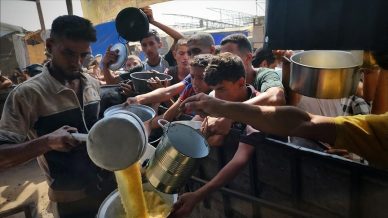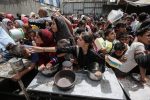GAZA, (PIC)
International humanitarian and human rights organizations continue to sound the alarm about an emerging famine in Gaza, particularly in the northern province. Despite this, the world remains largely inactive in the face of the ongoing starvation war and the closure of crossings, which prevent humanitarian aid from entering, imposed by the Israeli forces. The closure of the alleged American maritime dock, implicated in using aid trucks to commit the recent Nuseirat massacre, further exacerbates the dire situation for Gaza’s residents.
According to the official UNRWA account, “Children in Gaza continue to suffer unimaginably from this war. UNICEF reports that 9 out of 10 children in Gaza are experiencing severe food insecurity, and Oxfam indicates that many children go days without food.” This highlights just a fraction of the humanitarian catastrophe faced by the people of Gaza, especially the children, under ongoing Israeli aggression that has persisted for eight months. The UNRWA account stresses, “No child should face such horrific conditions; a ceasefire must be implemented immediately.”
On June 5, UNRWA received 62 trucks loaded with humanitarian aid through the Kerem Shalom crossing (57 of which were for UNRWA). However, this marks a significant decrease in the number of trucks by the United Nations and humanitarian organizations compared to the period before the Rafah operation began.

Escalating hunger in Northern Gaza
Hussam Abu Safia, director of Kamal Adwan Hospital, describes the catastrophic famine in northern Gaza. He confirms, in statements to the Palestinian Information Center, that “the specter of famine looms over Gaza, and signs of malnutrition have been recorded in some children.” Abu Safia adds, “We are trying to resume medical services at a minimal level amid fuel shortages and the catastrophic situation in the Strip.” He emphasizes that “the health system in Gaza is a target for the occupation, but we are attempting to continue providing medical services at the bare minimum.” He reported that about 50 children were found suffering from malnutrition in just one week.

Continued starvation war and collective punishment
The Red Crescent Society warned a couple of days ago about the ongoing closure of the Rafah land crossing by Israeli forces amid severe and imminent famine levels in Gaza. In a statement to the Palestinian Information Center, the society said, “This collective punishment imposed on the Palestinian population in Gaza not only exacerbates the humanitarian situation but also constitutes a direct violation of the International Court of Justice’s May order on temporary measures and international humanitarian law.”
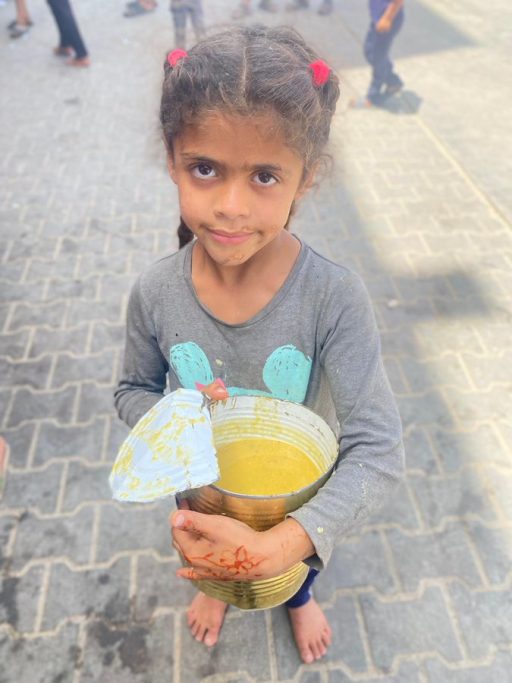
FAO warns of famine risk
Oleg Kobyakov, the communication director for Russia at the UN’s Food and Agriculture Organization (FAO), stated that the risk of mass famine in Gaza persists. Kobyakov noted, “These predictions remain due to the ongoing hostilities negatively impacting civilians. We can talk about a large-scale crisis, with Gaza currently being one of the hottest spots for famine worldwide, and UN humanitarian agencies are struggling to mitigate it.” According to Spain’s El Pais, citing staff from the NGO Action Against Hunger, approximately 30% of children under the age of two in Gaza suffer from severe malnutrition. The organization also warned that Gaza faces the threat of severe disease outbreaks this summer due to waste and rising temperatures, exacerbating the plight of already food-insecure residents.
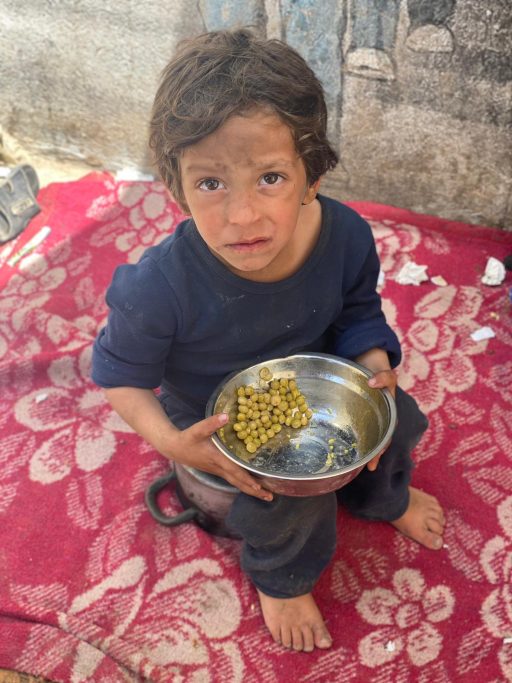
Famine early warning systems network report
Despite widespread famine and children dying from malnutrition, the ongoing Israeli war hampers the collection of necessary evidence to officially declare a famine in Gaza, which could later be used in international courts. According to the internationally recognized Famine Early Warning Systems Network (FEWS NET), “It is likely that famine is a reality in northern Gaza, with people, including children, dying of hunger across Gaza Strip, and this could continue until at least July.” However, the report underscores that the Israeli war and restrictions on humanitarian organizations’ access hinder data collection to prove the existence of famine. The official famine declaration requires data based on three internationally recognized indicators: 20% of households facing severe food shortages, at least 30% of children suffering from acute malnutrition, and a mortality rate of two adults or four children per 10,000 people per day due to hunger and its complications.

Evidence for indictment at the International Criminal Court
The official declaration of famine in Gaza is crucial as it can serve as evidence in the International Criminal Court and the International Court of Justice, where Israel faces genocide charges. The FAO’s report on hunger crises predicts that over a million people in Gaza could face famine and death by mid-July. A study by the United Nations Office for the Coordination of Humanitarian Affairs (OCHA) involving over 93,400 children under five years old in Gaza found that 7,280 suffered from acute malnutrition. Northern Gaza, in particular, suffers from severe malnutrition, with limited aid reaching those remaining during the first months of the war.

Displacement, fear, and hunger
The World Food Program warned that families in Rafah continue to face displacement, hunger, and fear. In a post on X, the program highlighted that people cannot access clean water, fuel, or food due to limited aid flow. Humanitarian organizations need safe and unrestricted access.
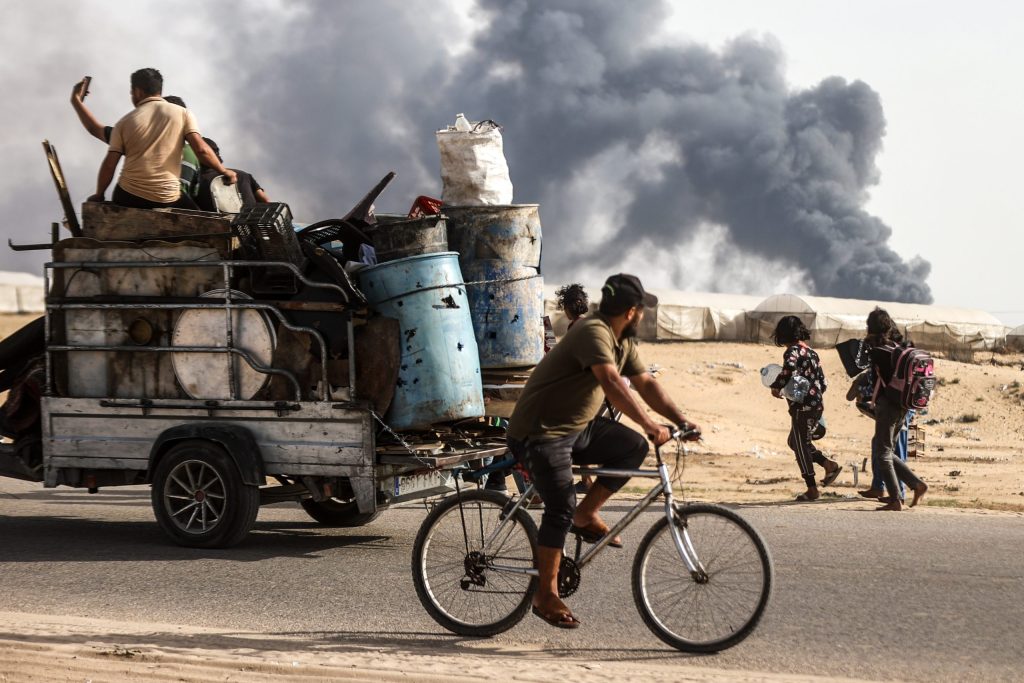
The full siege on Gaza continues
The Government Media Office in Gaza warned that the occupation has imposed a complete siege on Gaza for over a month by continuing to occupy the Rafah crossing and blocking aid trucks. In a press statement last week, the office noted that only 257 trucks entered Gaza and the north from a point west of Beit Lahia, including 148 flour trucks and 26 medical supply trucks. The specter of famine once again threatens Gaza, particularly in Gaza City and northern provinces. The food security crisis is also worsening in the central and southern provinces, especially with the displacement of tens of thousands of people from Rafah due to the ongoing incursion by Israeli forces.



